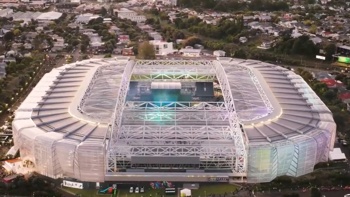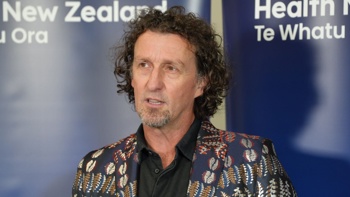
Labour promises a relatively tight next term in government according to its fiscal plan, released this morning in Auckland by Labour leader Chris Hipkins and finance spokesman Grant Robertson.
The fiscal plan is effectively a draft budget for its third-term setting out whether its spending promises fit within the money that is available, and detailing how much money is left once the promises are taken out.
As the party is in Government already, there are no huge surprises. The plan sticks to the tighter spending constraints Robertson outlined in August, and hits the same targets: a surplus of $2.1 billion in 2027 and net debt remaining under 30 per cent during the forecast period.
The plan includes Labour’s election promises, like taking GST off fresh and frozen fruit and vegetables, and a pledge to train more doctors.
The only big change since August is a further $50m saving on Covid-19 spending.
The plan is incredibly tight, however, with the next three budgets each promising less new spending than any budget in the last term of Government.
The operating allowance (a Treasury term for new day-to-day spending) will be $3.5b next year, $3.25 the year following and $3b in the two subsequent years.
That is well below the three operating allowances this most recent term of $4.8b, $5.9b, and $4.8b.
The plan tallies up promises Labour has made on the campaign trail and leaves scant headroom for new promises.
The health budget increases each year and in 2027 will be 17.5 per cent larger than this year.
While health and some other sectors have had cost pressures funded in this plan, other sectors have not. They will have their cost pressures funded from funding left-over from what has been committed in the plan.
There is $662m left-over in Budget 2024. This rises to $1.9b in 2025, and $3.1b in 2026 - although those figures are cumulative.
Essentially, there is about $1b left unallocated from each year, Robertson said this would be enough to fund cost pressures each year.
The opposition National Party is yet to publish its own fiscal plan, showing how its promises add up. It is rare for a party not to publish a fiscal plan before the first votes in an election are cast. Votes can be cast in the election from today for people overseas and with certain disabilities.
Robertson challenged National to meet the health cost pressure funding outlined in this budget.
Robertson said a re-elected Labour would meet its self-imposed rules of fiscal responsibility by returning an OBEGAL (operating balance before gains and losses) surplus by 2026/27 and keeping net debt below 30 per cent of GDP.
An OBEGAL surplus means the Government is spending less money than it is receiving in revenue.
“We are on track to meet these rules,” Robertson said.
“Labour’s fiscal plan is responsible, balanced, costed and credible. It has been endorsed by an independent analysis from Infometrics, who have concluded that the new spending commitments Labour has made can be accommodated within the future spending allowances set aside in PREFU (Pre-election Economic and Fiscal Update).
“OBEGAL is forecast to reach a surplus of $2.1 billion in 2026/27. Net debt peaks at 22.8 percent of GDP in 2024/25 and declines over the forecast period.”
He said Labour would not change income tax settings, and the party would continue to look for savings across hte public sector, having already found $8 billion earlier this year.
An additional $7 billion would be added to the capital allowance in every year of the next term, which would be used to build 6000 additional public homes that Labour has recently announced.
The existing health budget would cover the initial business case for the Hawkes Bay Hospital, he said.
“The next few Budgets will be tight as the Government moves to reduce expenditure after the necessary investments through Covid and to ease the pressure of the cost of living.
“There is room in Labour’s plan to meet cost pressures and for a limited number of new commitments, as announced during the campaign.”
The announcement follows the Prefu, which came out earlier this month and showed no recession, and a return to surplus in 2027.
It also showed the economy growing 2.6 per cent on average over the next four years, unemployment rising to 5.4 per cent next year, and annual wage growth forecast to average 4.8 per cent over the next four years compared to CPI inflation of just over 2 per cent.
In the September 2023 quarter, annual net migration was forecast to peak close to 100,000, and house prices were expected to reach annual growth of 3.9 per cent by June 2027.
Robertson, in revealing the Prefu, said the economy was turning a corner.
Robertson is addressing how he expects to keep this while spending the money he needs for Labour’s election promises.
Those include GST off fruit and vegetables, free dental care for those under 30 by 2026, subsidised public transport for those under 25, and boost to Working for Families.
Derek Cheng is a senior journalist who started at the Herald in 2004. He has worked several stints in the press gallery and is a former deputy political editor.
Thomas Coughlan is Deputy Political Editor and covers politics from Parliament. He has worked for the Herald since 2021 and has worked in the press gallery since 2018.
Take your Radio, Podcasts and Music with you








